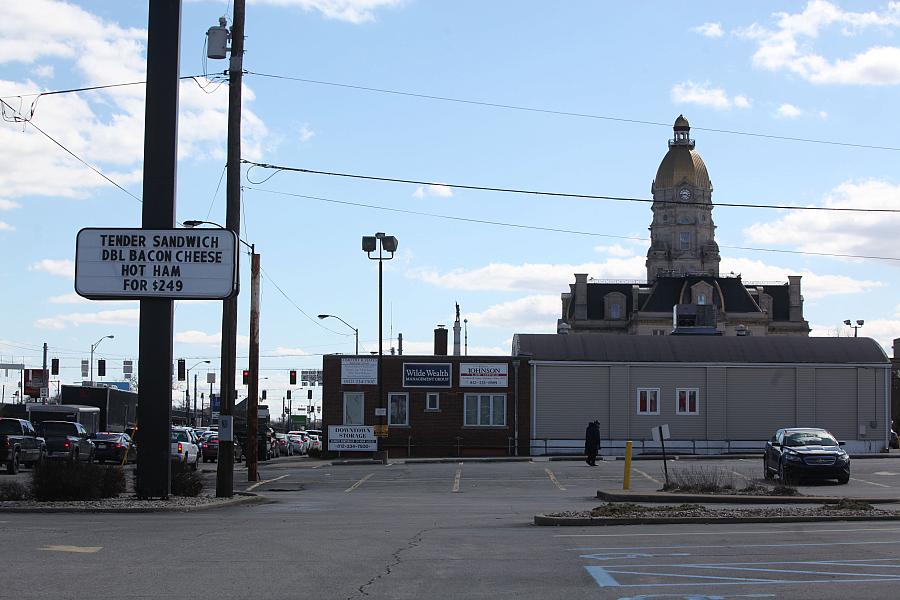How data on child neglect helped me show how Indiana is ‘punishing poverty’

The initial statistics shocked me. It turns out, I hadn’t seen anything yet.
I got the itch to write about child welfare after attending a press conference announcing new reforms for the Indiana Department of Child Services. Some alarming figures were casually tossed out:
- In Indiana, allegations of child abuse and neglect were made at the fifth-highest rate in the United States.
- Indiana families were investigated for abuse and neglect at the nation’s third-highest rate.
- Indiana removed kids from the home at more than twice the national average.
- In Indiana, courts were involved in child welfare cases more than any other state.
There had to be more to these numbers, I thought. I had reported in the state for years. Parents in Indiana didn’t appear to be any worse than moms and dads elsewhere.
So I applied for — and received — a 2018 Data Fellowship from the USC Center for Health Journalism. I knew the basics of data reporting but was by no means an expert. I figured that with the mentoring and training from the fellowship I could learn what was driving Indiana’s high rates of child abuse and neglect.
In the end, I found even more startling numbers than I thought existed, leading to the most-read story in my series.
My senior fellow, Meghan Hoyer of the Associated Press, and I started by trying to get child-level data from Cornell University, which houses the National Data Archive on Child Abuse and Neglect for the federal government. Apparently, the feds are being stingy with that data nowadays. Cornell told us no.
Luckily, the Annie E. Casey Foundation, through its Kids Count Data Center, has massive amounts of data on child abuse and neglect in America, down to the county level (it would have been nice to have the numbers at the city or ZIP code level, but the state of Indiana does not track it that granularly).
I downloaded the raw data for the three types of child maltreatment in Indiana — physical abuse, sexual abuse and neglect — for every county going back to 1990. With Meghan’s help, I started playing around with the data to spot patterns.
We noticed that physical and sexual abuse of children had both been trending downward in Indiana over the years; so had the substantiation rates for all three types of maltreatment.
What had exploded, we discovered, were cases of child neglect. And that, we found, was driven by a surge in the number of neglect investigations.
Those figures weren’t readily available. We got them by creating a formula using the percentage of cases that were substantiated and the total number of substantiated cases.
Now I could see where exactly in the state the surge of neglect investigations was taking place. Right off the bat, I noticed some surprising trends. The investigations were happening at the highest rates in rural parts of Indiana, far from any of the major population centers.
I also got the child population for every county in Indiana, so I could calculate rates of neglect investigations per 1,000 kids. That’s where the numbers got even more stunning.
The top county, Vigo, had 238 neglect investigations for every 1,000 children in 2017. That meant that as many as a quarter of the kids in Vigo County were checked out for neglect that year. (The headline of my story — “In one Indiana county, as many as 1 in 4 kids are subject of child neglect investigations” — probably helped the article become the most-read in the series and garnered statewide attention).
I gathered other data to determine what might be behind all these child neglect investigations: drug use, the number of DCS caseworkers, poverty.
The best predictor turned to be that last one: In general, the more child poverty a county had, the more likely families there would be investigated for child neglect.
In many places, the share of kids in poverty lined up almost exactly with the percentage of children subjected to neglect investigations (a quarter of Vigo County youth are in poverty). That discovery led to this remarkable scatter graph:
//The finding also helped form a major theme of my series: that Indiana was, in effect — to quote one of my sources — “punishing poverty.”
Several other experts told me that the same thing: The state has been confusing poverty with neglect, and not making it easy for poor families to extricate themselves from the system. In fact, Indiana was one of the few states that had outright poverty in its definition of neglect (the governor signed legislation changing that in the weeks after my series started).
This data dive also helped me find the location in the state most emblematic of the problem: Vigo County. I visited the county seat of Terre Haute and talked to educators, researchers, health officials, families who’ve been involved with the system. None of them seemed to be all that shocked by what I’d uncovered.
"You have all these markers of poverty — food insecurity, substance abuse, a big increase in self-harm and interpersonal violence. When you take all of that together, it's not surprising you're going to see this trickle down to the abuse and neglect of children," said Jack Turman, an Indiana University public health professor who does research in Terre Haute.
The lesson of all this: Keep going.
Don’t take numbers at their face value. Look for more numbers that explain those numbers, and so on. There is tons of data out there, available at your fingertips. It’s just a matter of knowing where to find it, and then how to crunch it.
Go as far as the data takes you. That’s where you’ll find the real story.

